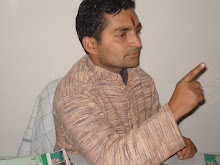The Madhesi Issue in Nepal
--K Yhome
The recent turmoil in Madhes (or the Terai plains bordering India) was a stark reflection of the challenges confronting the restructuring process in Nepal. It was also a reminder to the current interim government that the problems in Nepal are not yet over and that there are serious socio-economic and political issues that need to be addressed.
The Madhesi uprising in January was marked by bans, protests, and violence in some major areas of Nepal’s terai resulting in the death of over thirty people. This has in several ways changed the interim government’s approach to and the management of Nepal’s political restructuring and peace process. It has also raised many questions. Why was the violence so potent? Who was responsible? How will it affect the restructuring process? And so on.
These questions are palpable in the context of Nepal’s fragile political restructuring process that is underway. While exploring answers to these questions, however, there is a proclivity to misinterpret the Madhesi issue. Some (mis)conceptions that have come about in the wake of the uprising are not only erroneous but also dangerous.
The Madhesi issue is not a communal issue. It is not one of Madhesis (”people of the plains”) vs Pahadis (”people of the hills”) as some tend to view it. This misinterpretation of the Madhesi issue commits a serious mistake by making it a community-based issue that could have grave implications for the country. To view the issue as a problem between Madhesis and Pahadis reveals a poor understanding of Nepal’s complex society.
While one may have some facts supporting such an argument, it fails to explain the real issue of the Madhesis. There were also reports that certain “forces” (implicating the “Royal agents” and the “right wing” elements in India) of allegedly instigating the Terai riots to create trouble for the interim government in a bid to salvage the “monarchy” in Nepal. Hard evidence to ascertain the involvement of these forces is difficult to unearth, but many in Nepal point fingers at these forces as being responsible for the violence.
Whatever the motive of those behind the terai violence, many ordinary Madhesis have lost their lives. Madhesis out on the streets at the risk of their lives were there for a different reason. For them it was a fight for a genuine object - the Madhesi cause.
The Madhesi issue did not suddenly emerge in January 2007. A long history of a sense of discrimination is at the root of the Madhesi struggle. To explain the recent uprising it is necessary to understand the issue from the correct perspective. The issue relates to a movement against the state’s “discriminatory” politics. It is a fight for recognition of rights - political, cultural as well as economic - and a struggle for equal representation and opportunity. This forms the core ingredient of the Madhesi issue.
For over five decades, the Madhesis have been waging a movement against “discriminatory” laws of citizenship and language, as well as recruitment policies to the armed forces and bureaucracy. The struggle can be traced back to 1951 when a party called the Nepal Terai Congress was formed under the leadership of Vedananda Jha to advocate “regional autonomy” for the Madhesis.
Again, in 1983, Gajendra Narayan Singh established an organization called Nepal Sadbhavana Council with the aim of combat discrimination against the Madhesis. In the post-1990 era, the organization turned into a political party called Nepal Sadbhavana Party and in the general elections of 1991, 1994, and 1999, the party’s manifesto called for a federal system of government, a liberal policy on citizenship and a separate Madhesi battalion in the army.
Despite the long struggle, however, the Madhesi issue has not been resolved partly on account of Nepal’s five-decade history of being under autocratic rule - 1960 to 1990 and 2002 to 2006 - where political activities were restricted. Even during the short-lived democratic experiments in Nepal - 1950 to 1960 and 1991 to 2002 - the issue remained unresolved because of the lack of political will on the part of the successive governments.
The failure of the movement is also partly because of the internal divisions within the Madhesi leadership. The Sadbhavana Party has seen frequent infighting and splits that have further weakened the movement. It is in this context and in light of the predicaments mentioned that the Madhesi uprising of January needs to be understood.
The resolution of the Madhesi issue depends on how the interim parliament drafts a new constitution taking into account the various socio-political issues of the country. Should it fail to ensure the aspirations of the people, the recent outburst of violence in the terai will only be an indication of more chaos to follow.
Source::http://www.ipcs.org/whatsNewArticle11.jsp?action=showView&kValue=2243&status=article&mod=b


0 Comments:
Post a Comment
<< Home